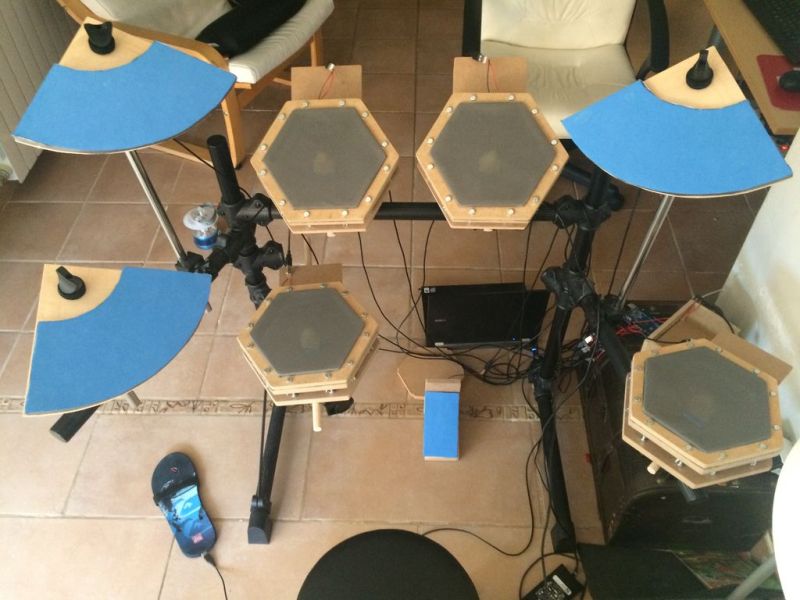In our eyes, there isn’t a much higher calling for Arduinos than using them to make musical instruments. [victorh88] has elevated them to rock star status with his homemade electronic drum kit.
The kit uses an Arduino Mega because of the number of inputs [victorh88] included. It’s not quite Neil Peart-level, but it does have a kick drum, a pair of rack toms, a floor tom, a snare, a crash, a ride, and a hi-hat. With the exception of the hi-hat, all the pieces in the kit use a piezo element to detect the hit and play the appropriate sample based on [Evan Kale]’s code, which was built to turn a Rock Band controller into a MIDI drum kit. The hi-hat uses an LDR embedded in a flip-flop to properly mimic the range of an actual acoustic hi-hat. This is a good idea that we have seen before.
[victorh88] made all the drums and pads out of MDF with four layers of pet screen sandwiched in between. In theory, this kit should be able to take anything he can throw at it, including YYZ. The crash and ride cymbals are MDF with a layer of EVA foam on top. This serves two purposes: it absorbs the shock from the sticks and mutes the sound of wood against wood. After that, it was just a matter of attaching everything to a standard e-drum frame using the existing interfaces. Watch [victorh88] beat a tattoo after the break.
If you hate Arduinos but are still reading for some reason, here’s a kit made with a Pi.

















Very cool project. OK, the drumming … not so much. But one has to start somewhere, right? :-D
It would be even cooler if the actual position where each drum is hit triggered some MIDI controls as well and the force/velocity with which the drum is played would count. From the track to be heard in the video, neither position nor velocity are getting recognized.
Yet, again: A very cool start.
Position might be easy using something like resistive touchpad techniques, just two grids of wire-like objects. Impact velocity, I think could be done without an accelerometer by using the piezo’s energy to charge a cap, then discharge through an LED that is next to an LDR or optical transistor or just a back-biased LED of the same wavelength. Since the piezo should generate more energy on a harder hit, the LED’s time lit will be proportional to both the impact force and the distance of the hit from the piezo.
Excellent, I love DIY instrument hacks.
His first paragraph is about the question everyone asks when they see this kind of projects.
Lol, I see what appears to be a sandal with a USB port! :D
Cool.
Started to make something similar a few years ago with neither an Arduino or a Pi.
It was all based around a PIC the midi output connected to garage band and it worked a treat. I just never got around to finishing the pads. I was salvaging the piezo speakers from musical greeting cards and the pads I was making out of mouse mats.
I think you can leave out a few parts (MIDI to USB cable) and use this, http://projectgus.github.io/hairless-midiserial/
That sounds very good! I bought some Guitar Hero drum controllers to do this with. Building it from scratch is way cooler.